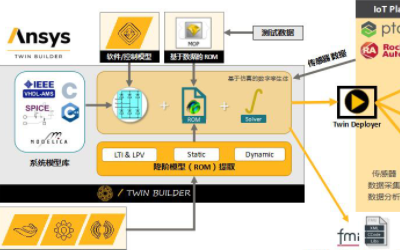China Approves Requirements for UHF Bandwidth
The sanctioned spectrum should be compatible with UHF RFID frequencies used in many other parts of the world, including the United States and Europe.
China's State Radio Regulation Committee (SRRC) has approved bandwidth in the 840.25 to 844.75 MHz and 920.25 to 924.75 MHz ranges for use by UHF RFID tags and interrogators in that country. Each band is divided into 20 channels, each consisting of 250 kHz of spectrum. China has yet to officially announce its new UHF RFID regulations, though unnamed sources in China claim the committee's RFID working group approved them on April 30.
The SRRC is part of China's Ministry of Information Industry (MII). Once the MII publishes the RFID bandwidth requirements, manufacturers will be able to submit applications for SRRC approval on UHF-band RFID within the listed ranges.
RFID UHF bandwidth across the European Union ranges from 865 MHz to 868 MHz, with RFID interrogators able to transmit at maximum power (2 watts ERP) at the center of that bandwidth (865.6 MHz to 867.6 MHz). RFID UHF bandwidth in North America ranges from 902 to 928 MHz, with RFID interrogators able to transmit at maximum power (1 watt ERP) for most of that bandwidth. In addition, European transmission channels are restricted to a maximum of 200 kHz in bandwidth, versus 500 kHz in North America. In China, the new regulations will allow RFID interrogators to transmit at maximum power (2 watts ERP) for the center 16 channels in each band, and at 100 milliwatts on the outermost four channels.
China's approval of the two UHF bands, says Craig K. Harmon, president and CEO of standards development organization Q.E.D. Systems, can be viewed as good news for U.S. and European companies. China's 920 to 925 MHz band overlaps the 902 to 928 MHz band used in the United States, so U.S. RFID tags will be readable by interrogators approved for use in China. Although China's 840.25 to 844.75 MHz band is lower than Europe's UHF RFID band, European RFID tags should still be readable in China as well.
Overall, Harmon described China's regulations as offering wider channel allocation than that available in Europe, with more bandwidth (5 MHz, as opposed to Europe's 3 MHz). Had the SRRC approved only the 840 to 845 MHz spectrum, and not also the 920-925 MHz, Harmon says, "We might be in trouble," since 840 to 845 MHz falls too far below the bandwidth sanctioned in the United States.
Nevertheless, the purpose of the 840 to 845 MHz band is still unclear to some analysts. "The implication with the two separate bandwidths," says Harmon, "is that one is intended for one use, and one is for another use." The lower (840 to 845 MHz) band could be used internally, he says—for example, with road tolling or animal identification. However, he speculates, using 840 MHz could cause interference with local aviation UHF applications.
The establishment of frequency regulations, in and of itself, is not yet a reason to celebrate, however. China has yet to announce which RFID standards it will adopt, and its eventual choice of standards could have far-reaching effects for RFID technology vendors and such Western retailers as Wal-Mart. China could adopt RFID standards using an air-interface protocol that is interoperable with EPC tags, or it could also develop its own Chinese standard, which would result in chips, systems and software being developed in China to meet those standards. The Chinese government is expected to announce its choice of RFID standards within the next two months, and the recently adopted frequency regulations may be formally announced at that time.
Once the bandwidth rules become official, the SRRC will require compliance testing for RFID devices before they receive the necessary certification. Tests must be conducted to prove a device works across the entire range of environmental conditions, such as temperature, shock or vibration.








